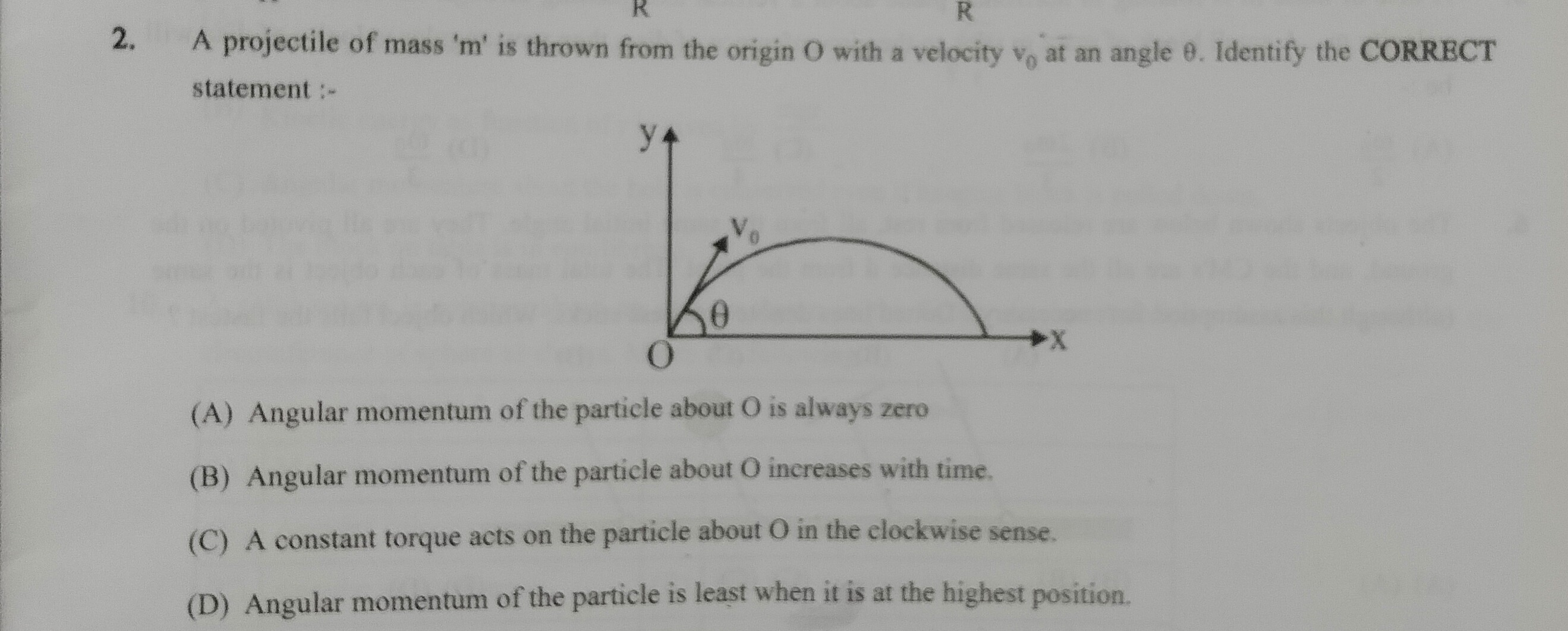Question
Question: A projectile of mass 'm' is thrown from the origin O with a velocity $v_0$ at an angle $\theta$. Ide...
A projectile of mass 'm' is thrown from the origin O with a velocity v0 at an angle θ. Identify the CORRECT statement :-

Angular momentum of the particle about O is always zero
Angular momentum of the particle about O increases with time.
A constant torque acts on the particle about O in the clockwise sense.
Angular momentum of the particle is least when it is at the highest position.
Angular momentum of the particle about O increases with time.
Solution
The angular momentum L of a particle about a point O is given by L=r×p, where r is the position vector from O and p=mv is the linear momentum. The torque τ about O is τ=r×F. The rate of change of angular momentum is equal to the torque: dtdL=τ.
For projectile motion, the force is gravity, F=−mgj^. The torque about the origin O is τ=r×F=−mgxk^. Since x(t)=(v0cosθ)t, the torque is τ(t)=−mg(v0cosθ)tk^, which is not constant. Thus, statement (C) is incorrect.
Integrating the torque with respect to time gives the angular momentum: L(t)=∫τ(t)dt=−21mg(v0cosθ)t2k^+C. Since L(0)=0, the constant of integration C=0. So, L(t)=−21mg(v0cosθ)t2k^.
(A) The angular momentum is zero only at t=0. For t>0, it is non-zero. Thus, statement (A) is incorrect. (B) The magnitude of angular momentum ∣Lz(t)∣=21mg(v0cosθ)t2. For t>0 and 0<θ<π/2, this magnitude increases quadratically with time. Thus, statement (B) is correct. (D) The minimum angular momentum is 0 at t=0. The highest position is reached at ttop=gv0sinθ, where the angular momentum is non-zero. Thus, statement (D) is incorrect.
